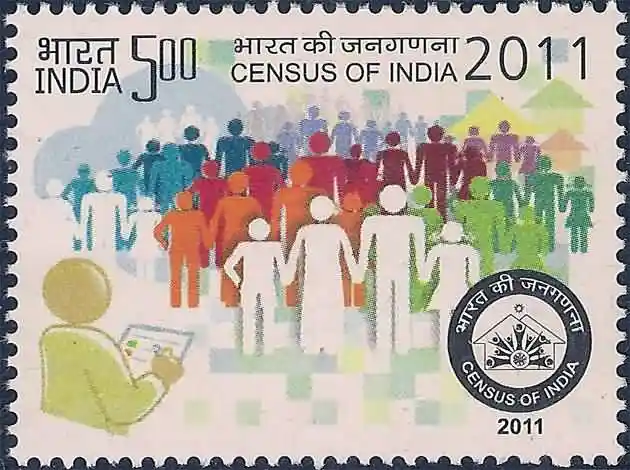First census of free India
Growing up, one must have come across the word 'Census' in their civics textbook. Being a pivotal form of noting how the country is growing, the population census is not to be ignored. On 9th February 1951, history was made is free India.

The postage stamp on the Census of India 2011, issued by India Post; Source: Public Domain
As always, much before the Westerners, it was the Indians who did it first. And when it came to the census, India didn't fail. The 'Rig-Veda' proved us first. It showed that in a time as early as 600-800 BC India, we, Indians had the presence of forethought to conduct a census, in its most basic sense.
The literature of the famed 'Arthashastr' written by the great Kautilya in 3rd century BC disclosed the data surrounding population counts, agricultural and economic statistics for the proposal of taxes. This was the founding stone for the census which is conducted in present times. A truly outstanding feat.
The form of 'census' as we know of it today, took its first steps in India from 1865 onwards and later in 1872 the first recognised census was carried out in the country by the British. The birth of India's census took place under the authority of British Viceroy Lord Mayo in 1872, who, in a twisted turn of fate was assassinated the same year in Andaman and Nicobar Islands.
With 'Mayo's' blood on its hands, the Indian census finally began to run as it was officially and completely conducted for the first time, in 1881 pre-Independence India. And it has not stopped running since. Carried out every 10 years, after the 1947 Independence, the census ran freely for the first time in 1951 under the able guidance of the Ministry of Home Affairs, Government of India.
It was on this day, 9th February 1951 that it started. The first census of the Indian population in free India.

Quite a full marathon, isn't it? First, running from us, Indians, to the British and finally, back to India.
A stark point of note in the 1951 census was the 1947 Partition. A total of 361,088,090 was recognised as the Indian population, a full 13% increase as compared to the 1941 census. At a time when the country was still recovering from its bitter-sweet Independence, the fact that only 18% literacy and an astonishing 32 years life expectancy was recorded in the 1951 census, is no surprise.
This 1951 census was the 9th one in line since 1871, being decennial, it has been conducted 15th times as of 2011. And do not fear, the census now runs next in 2021.
One wonders what will be found...something bitter? or something sweet?


